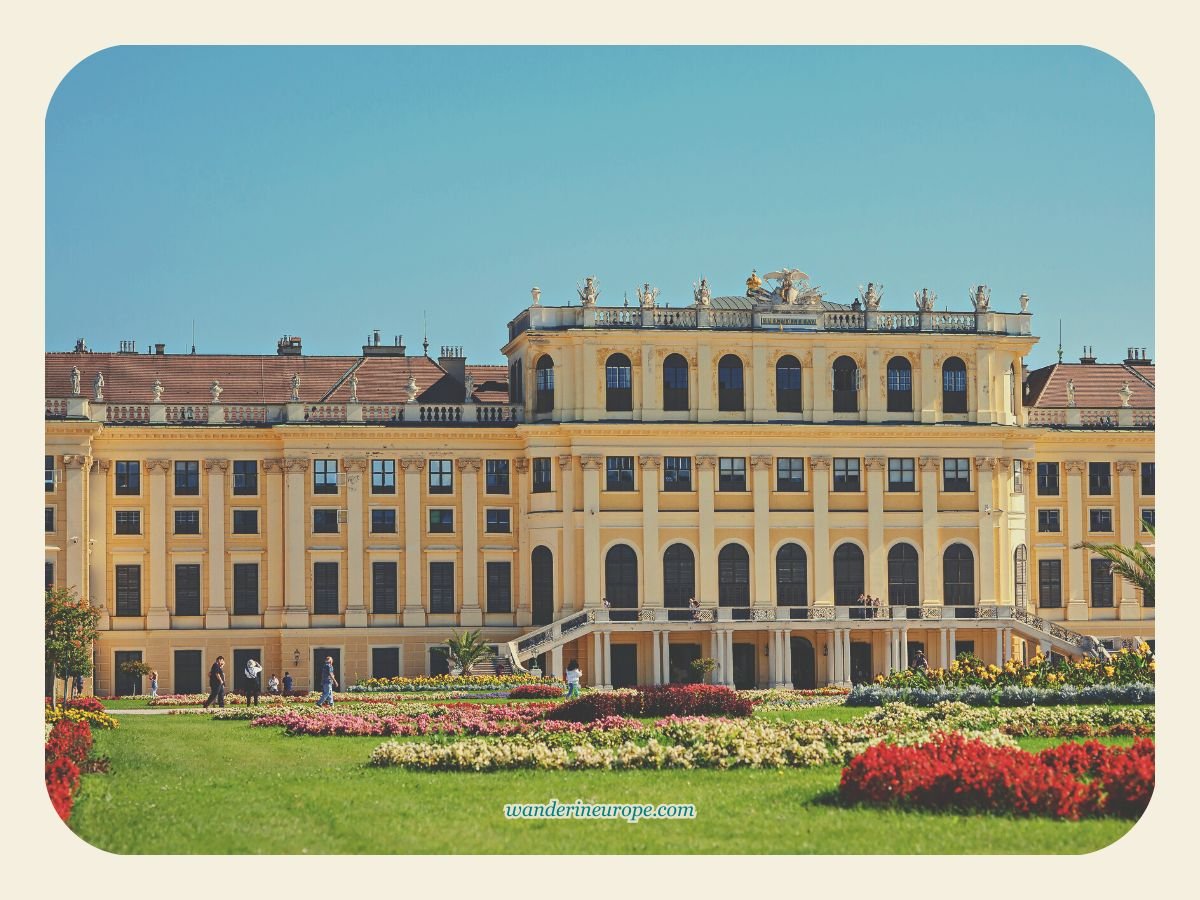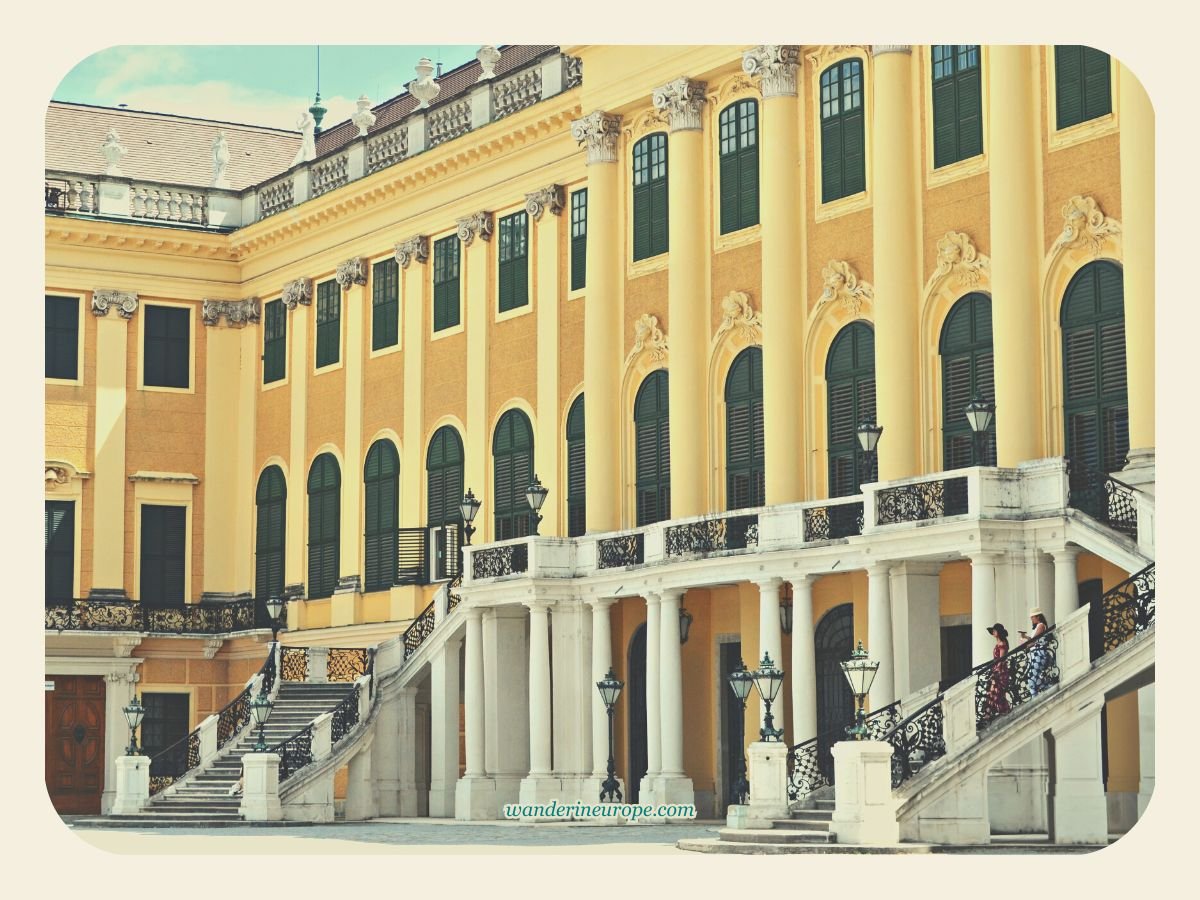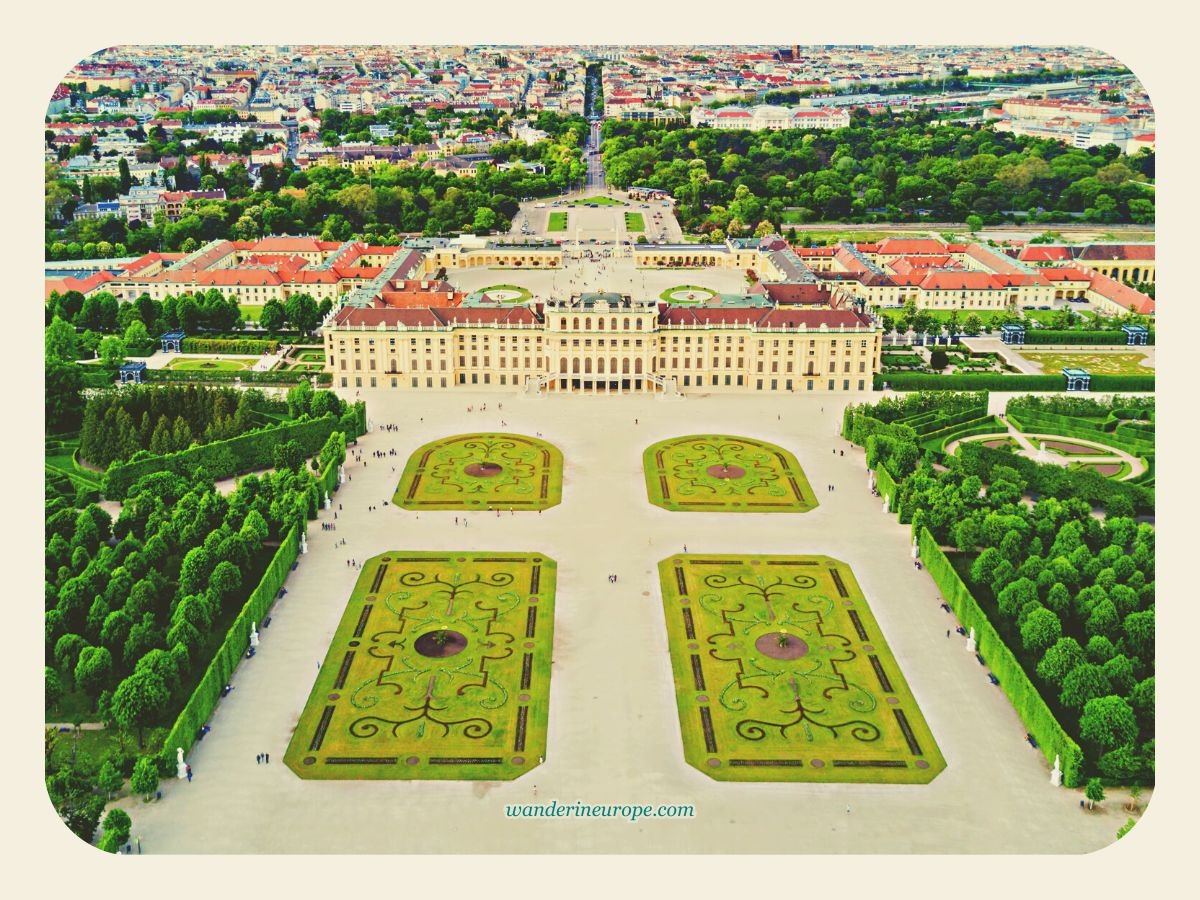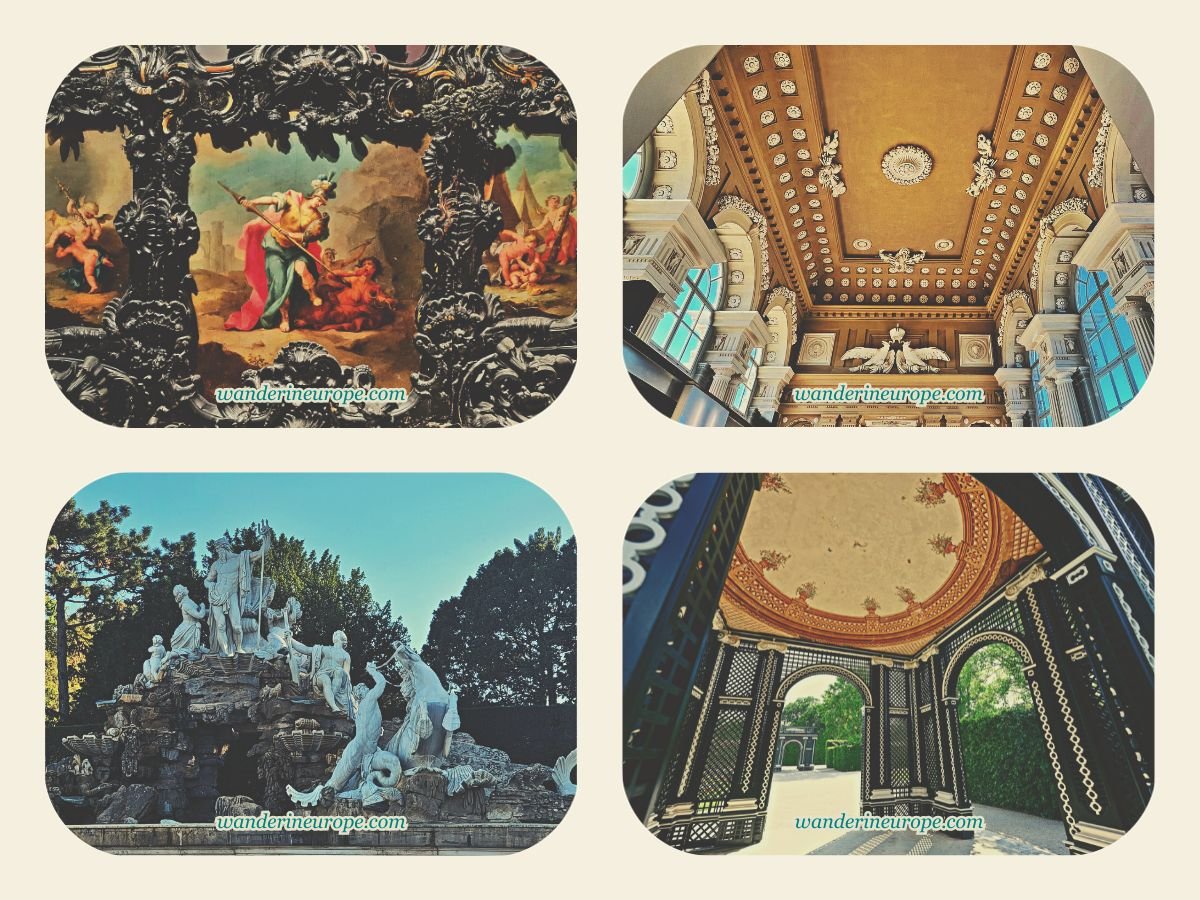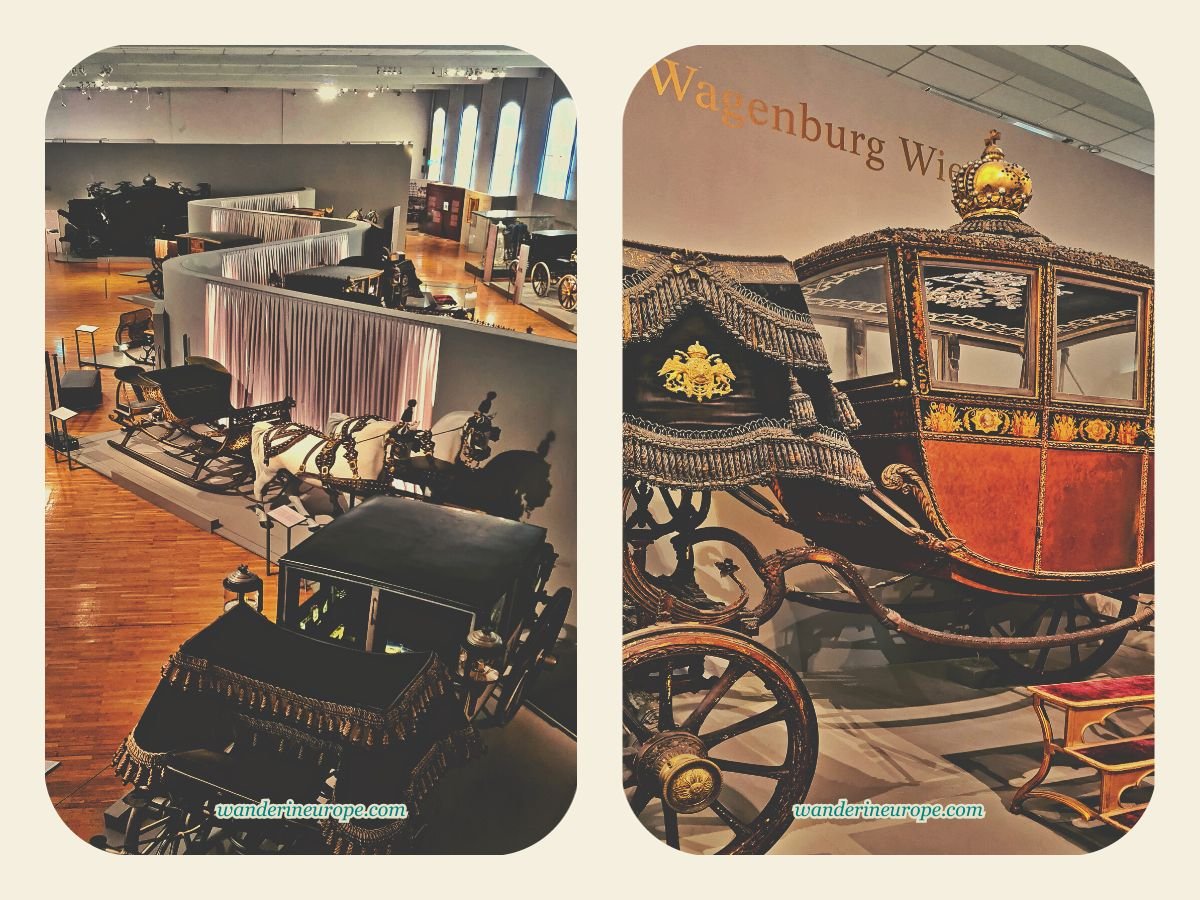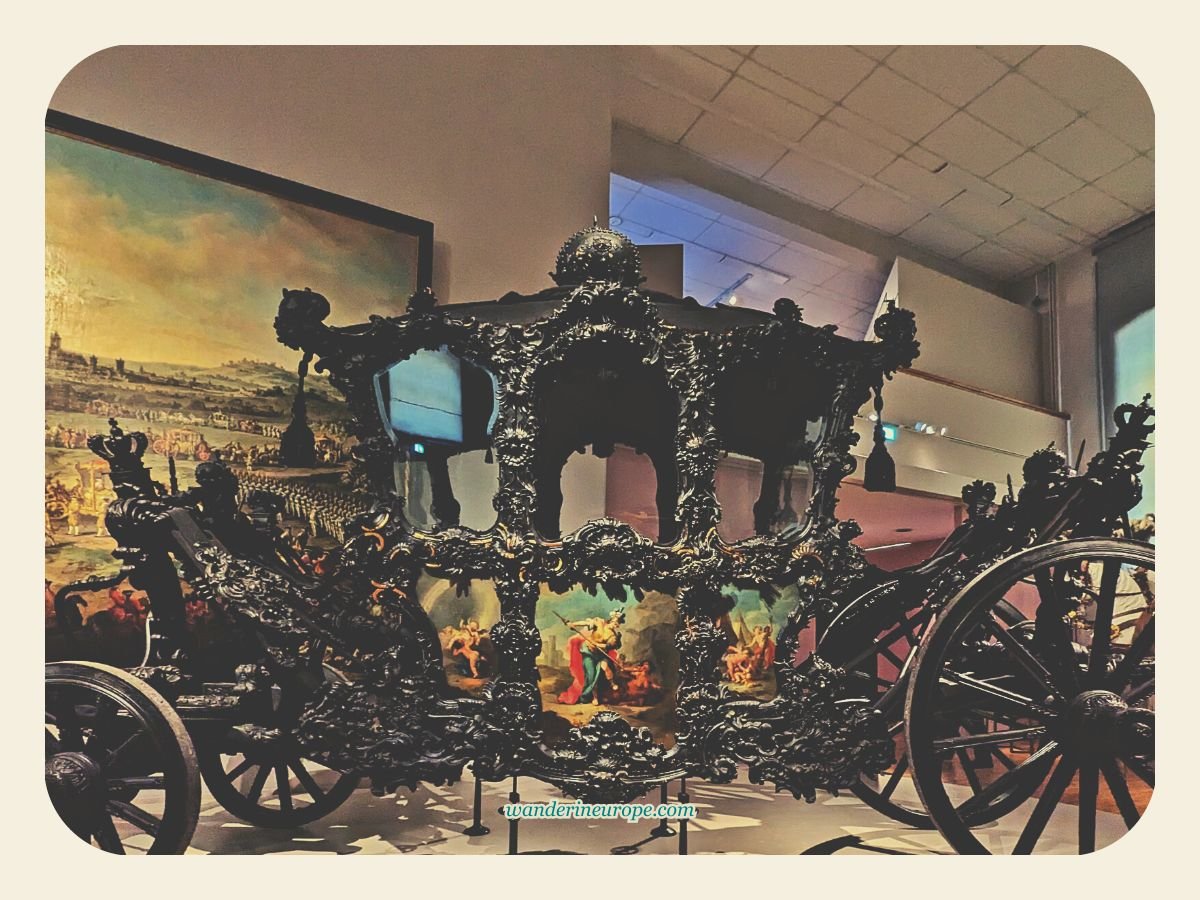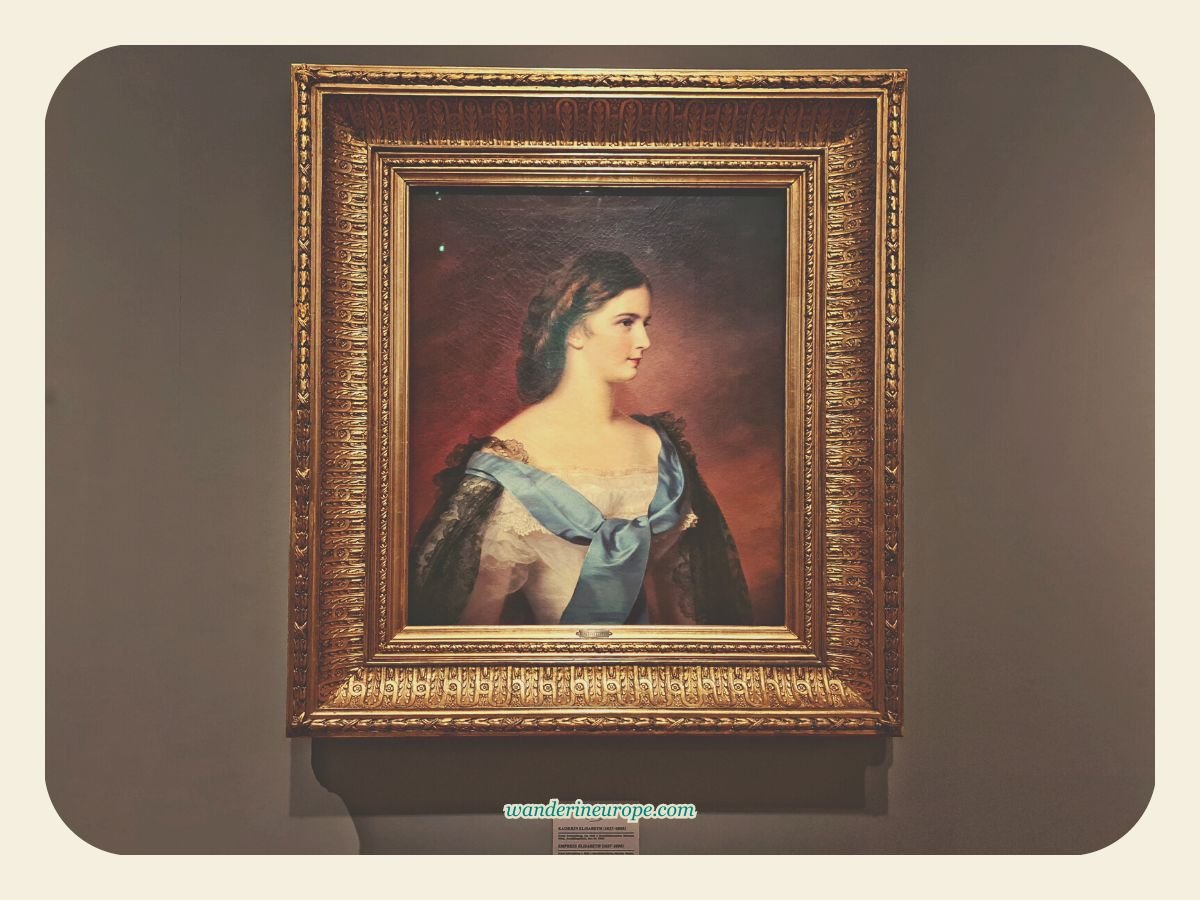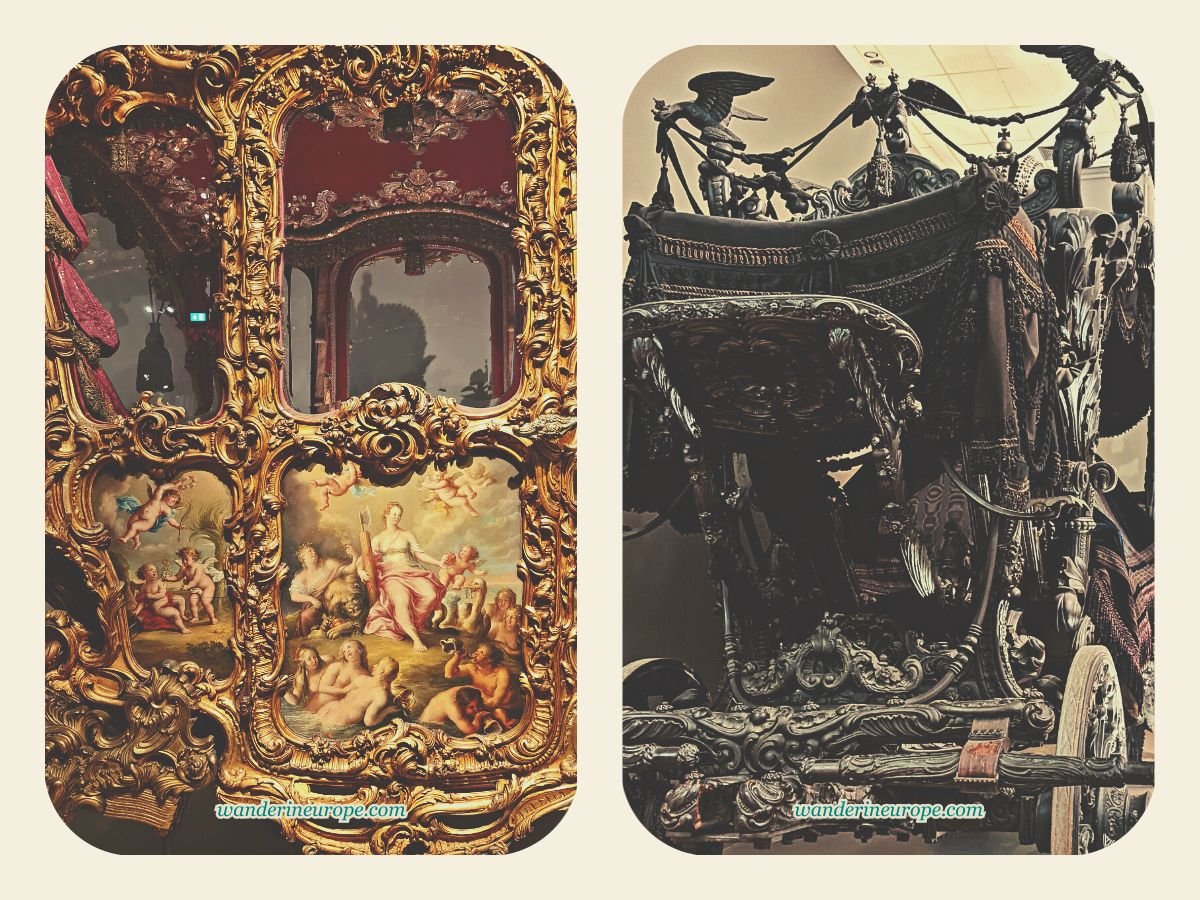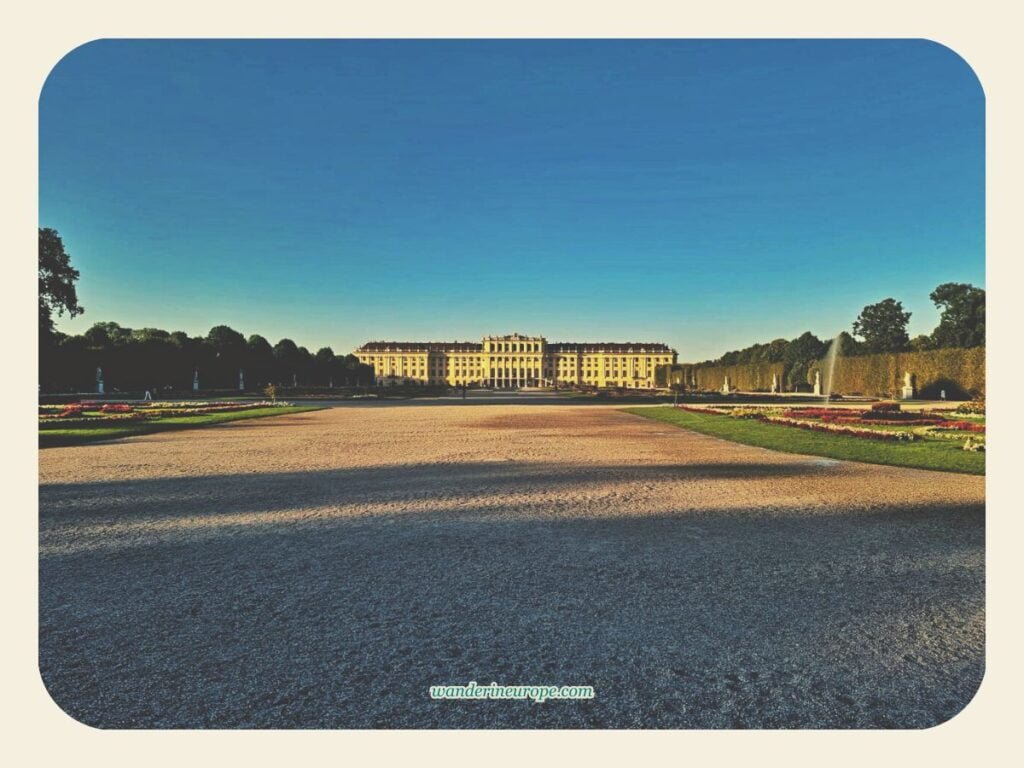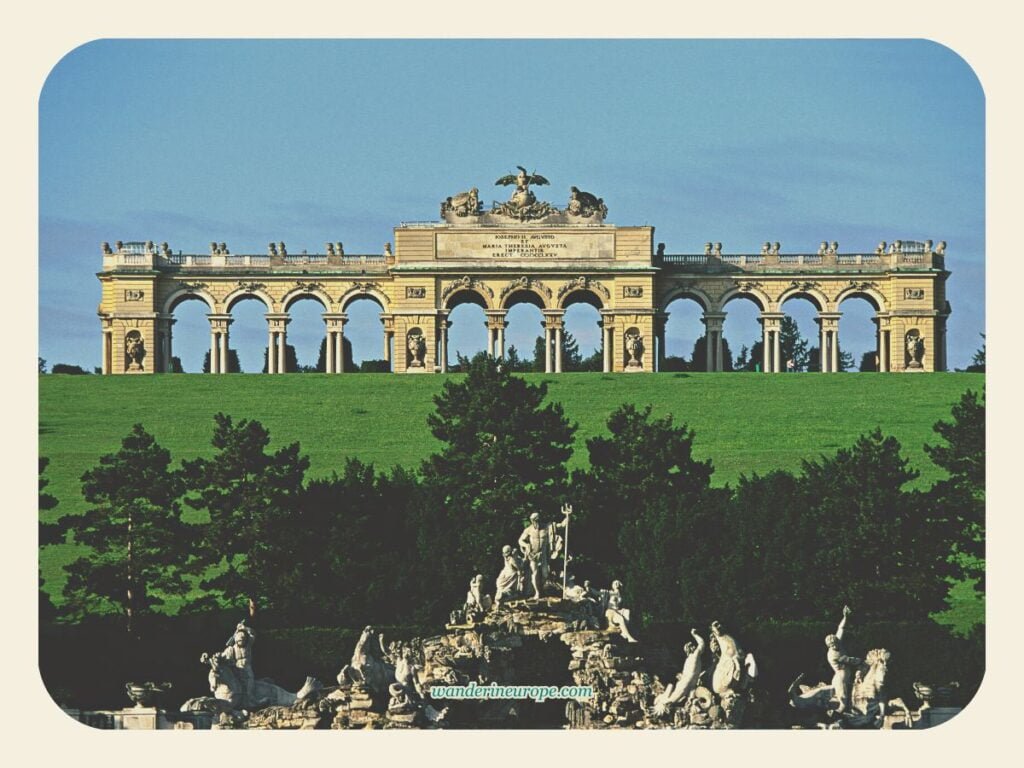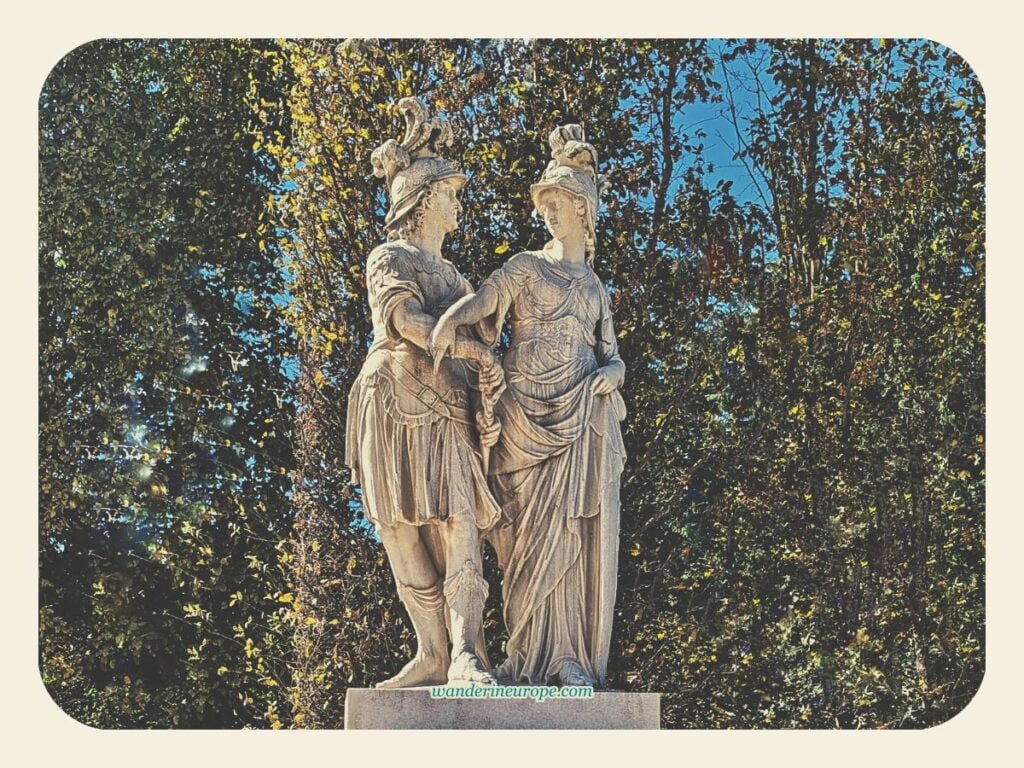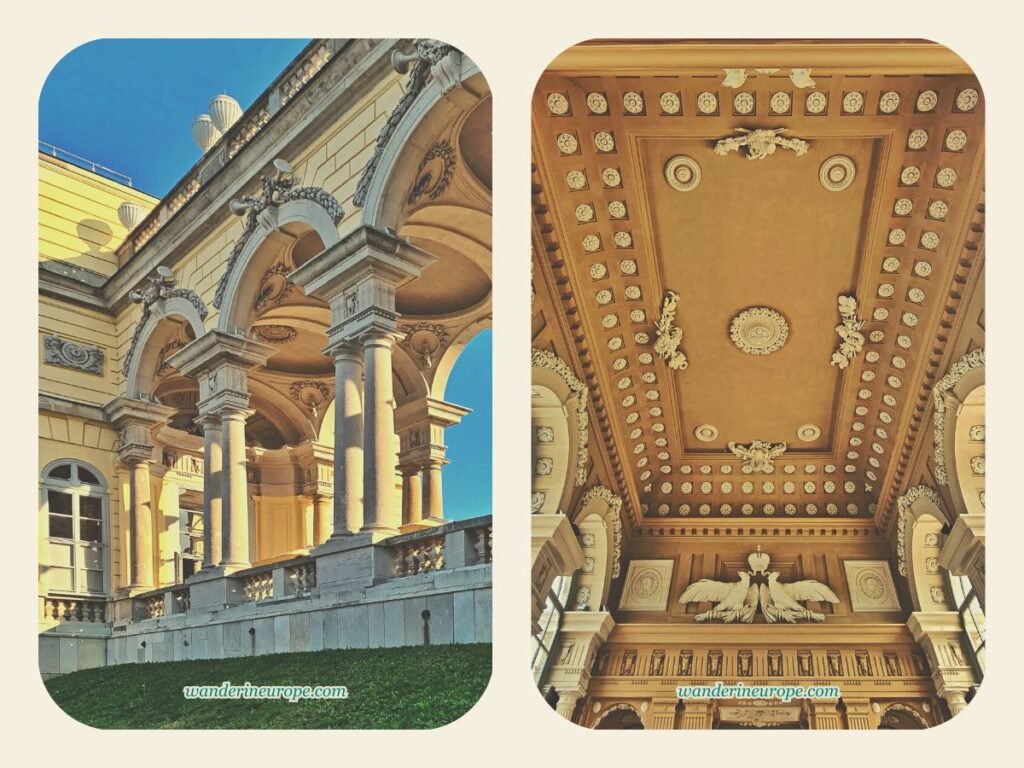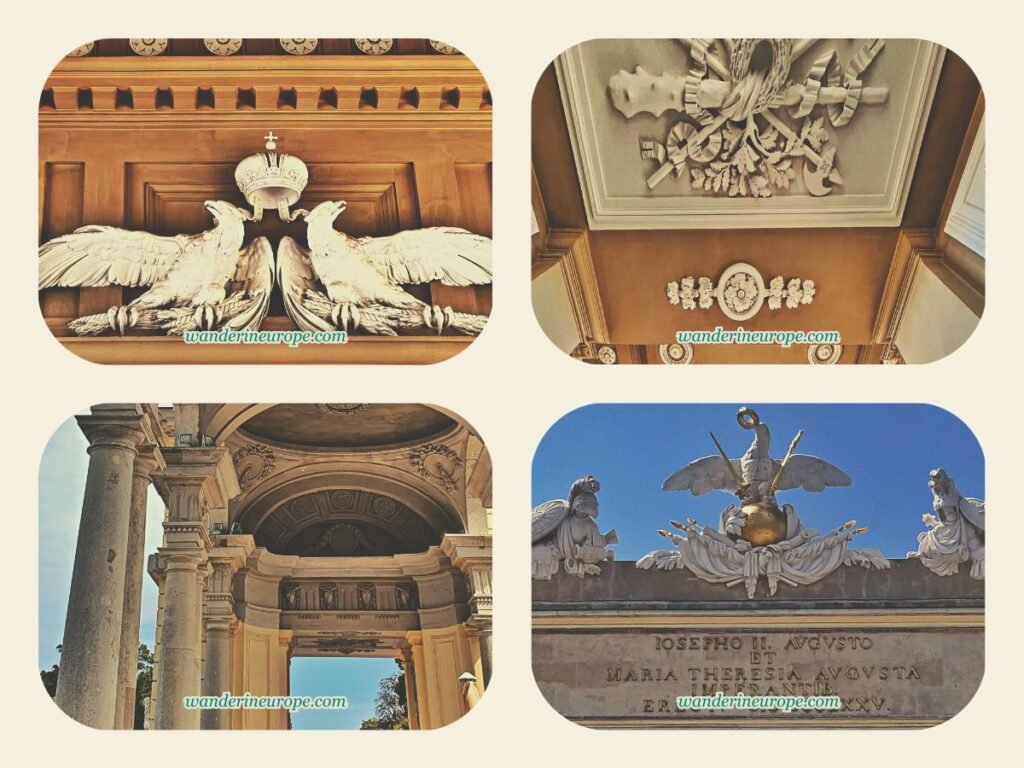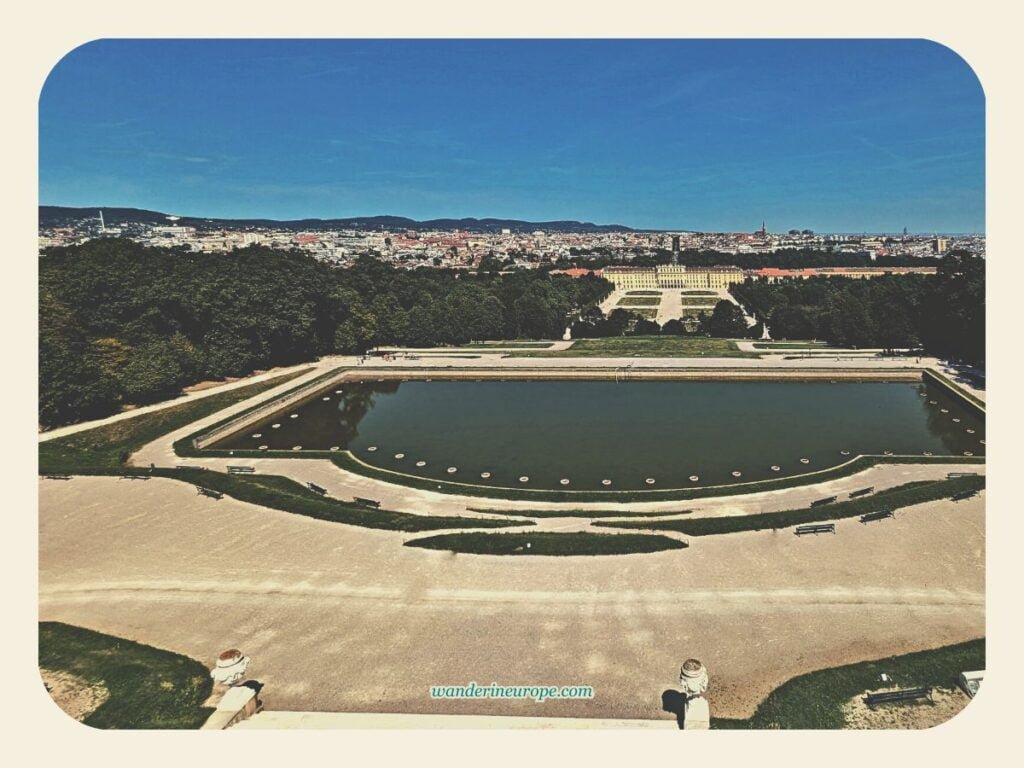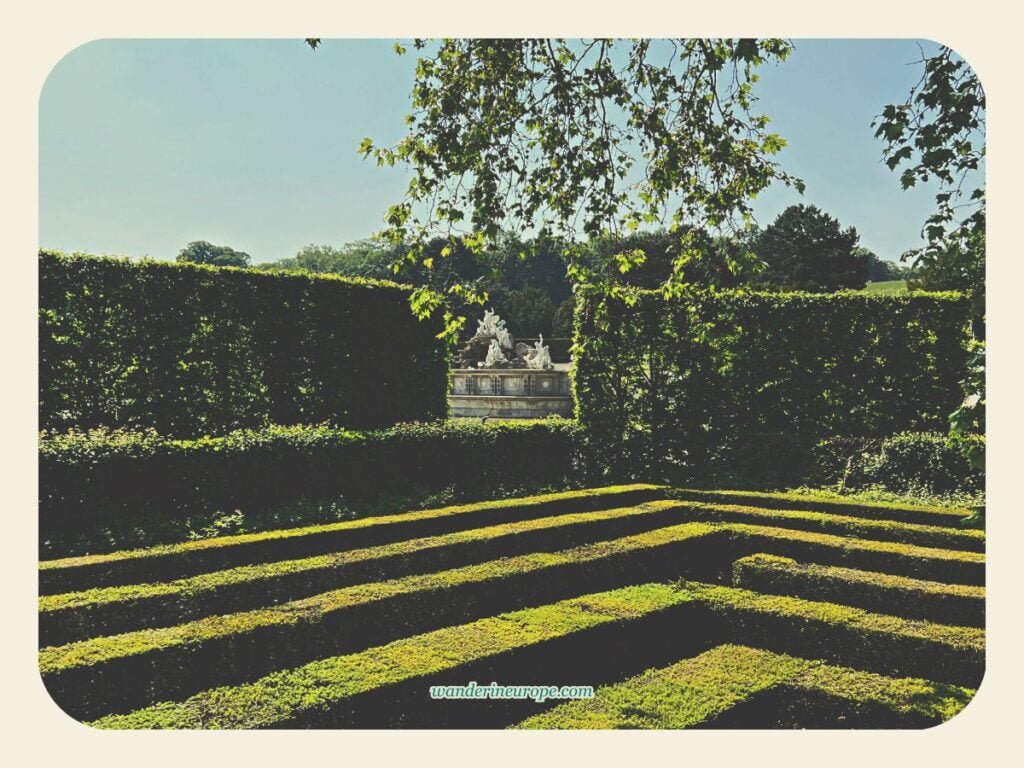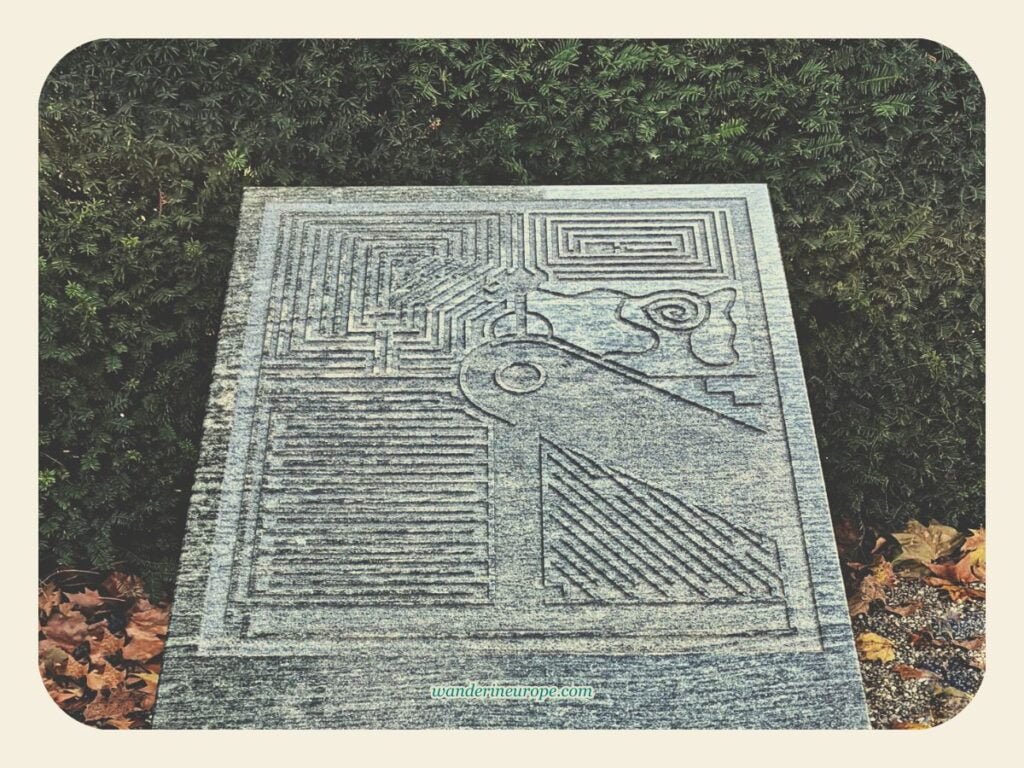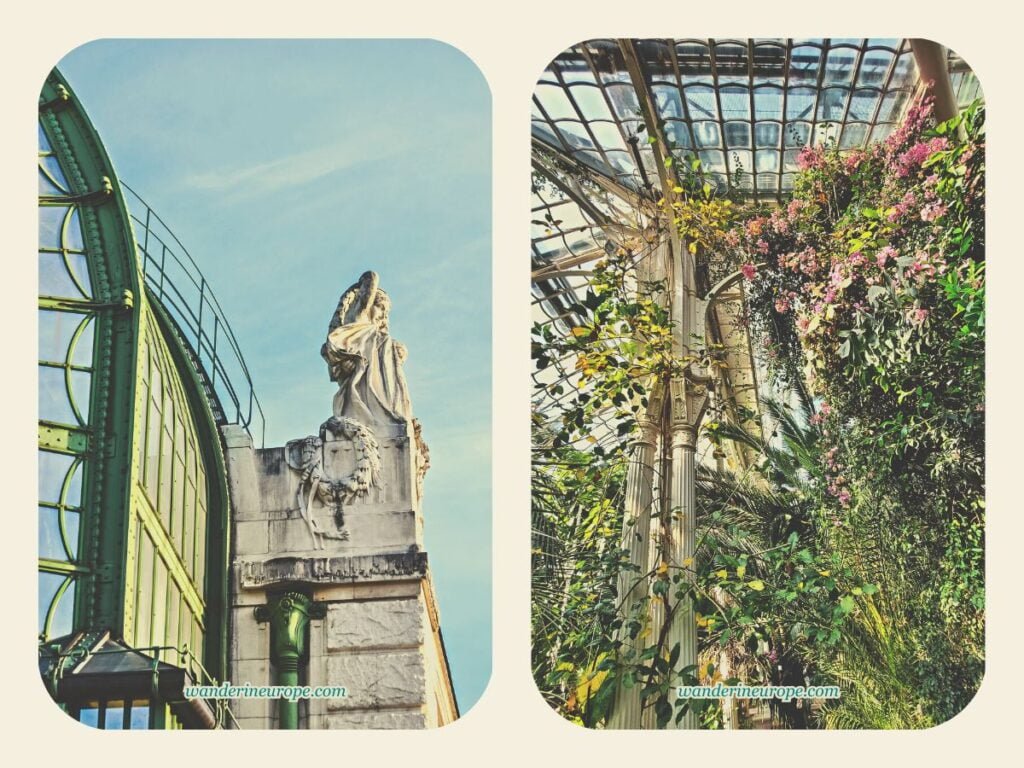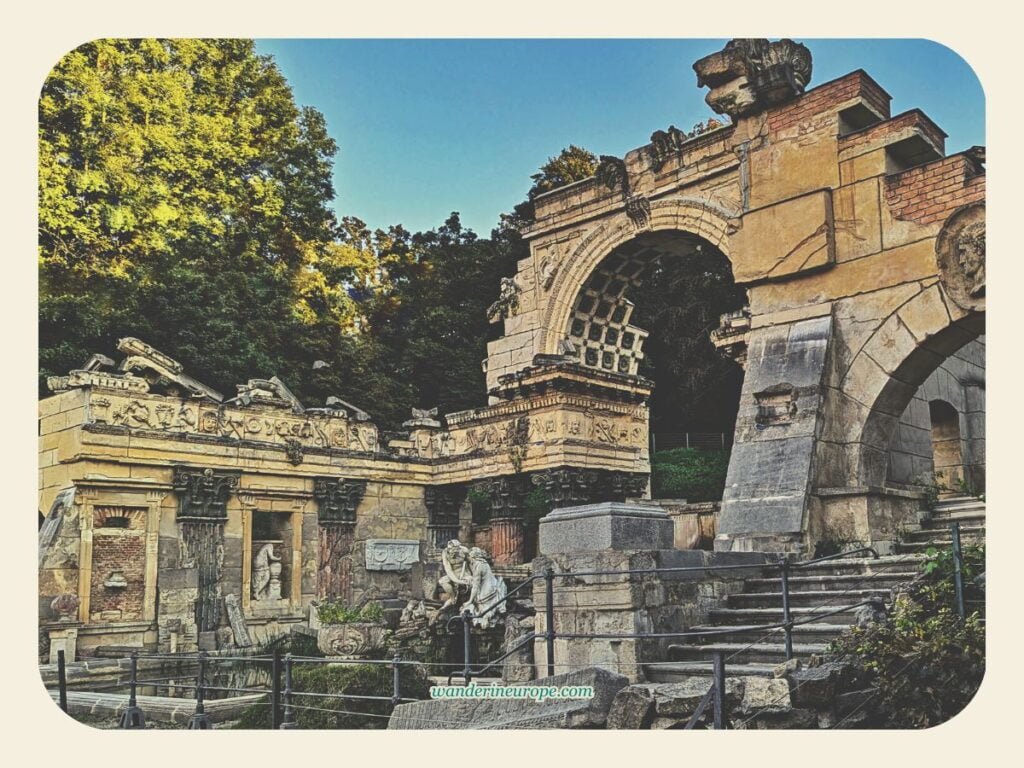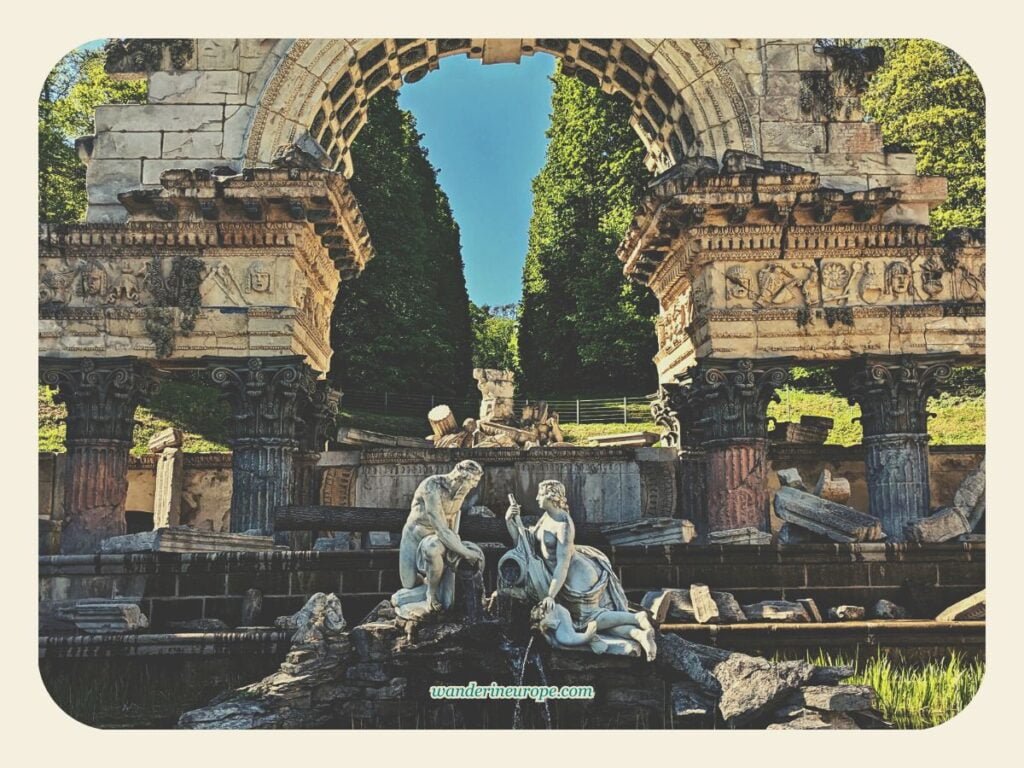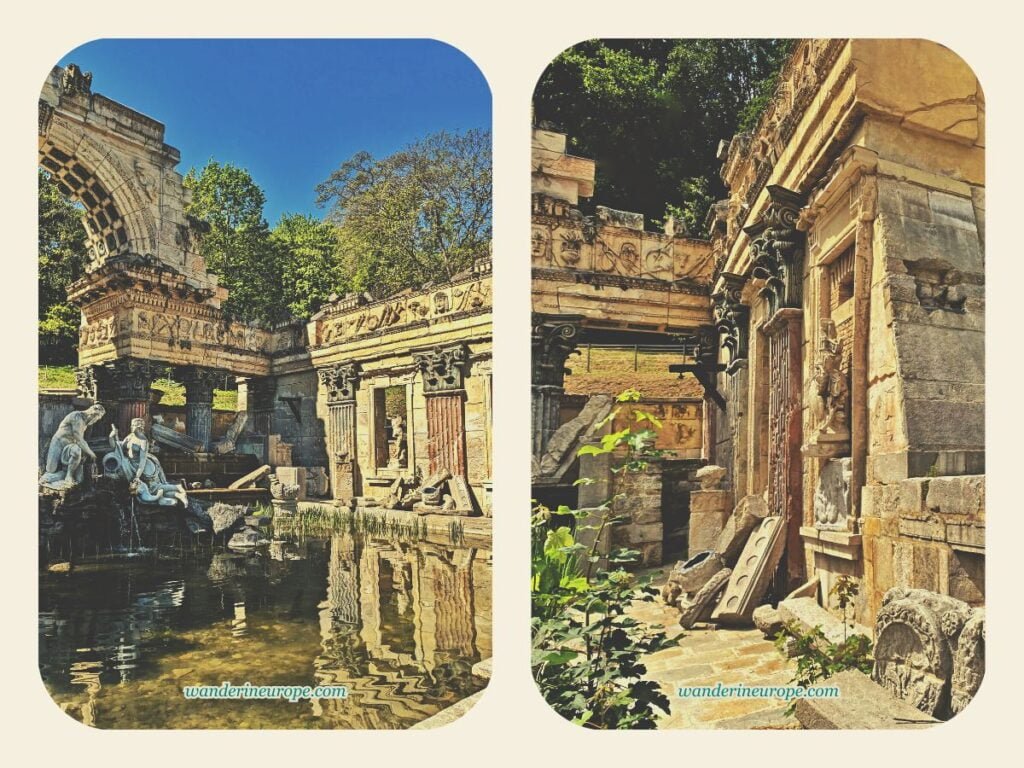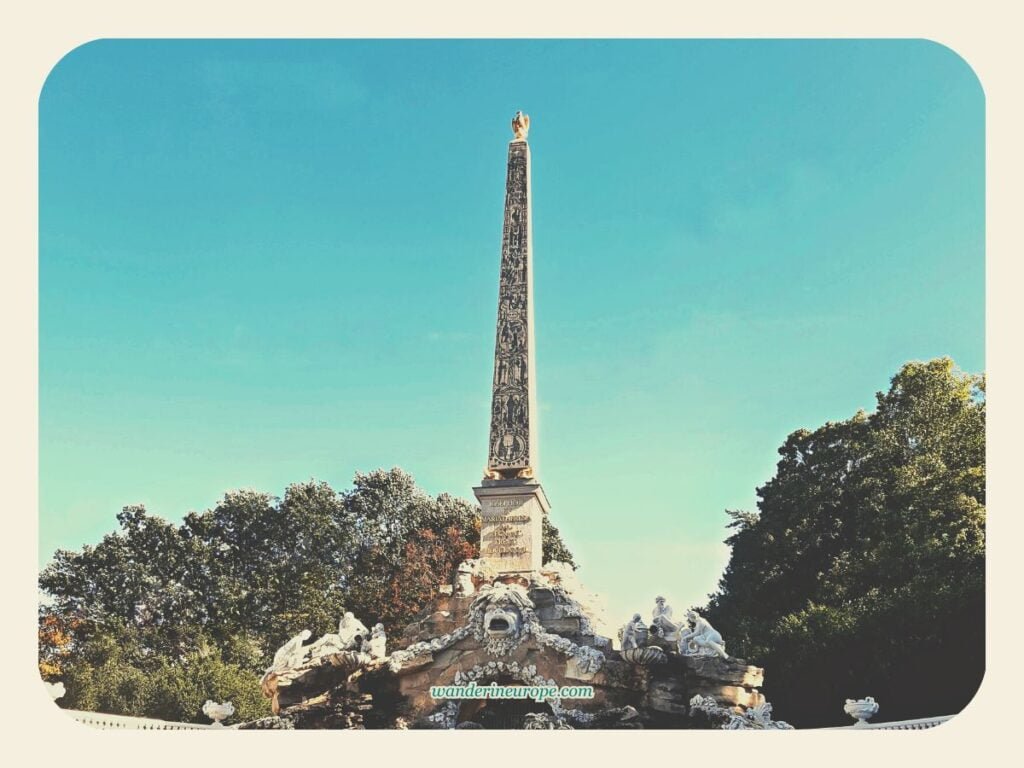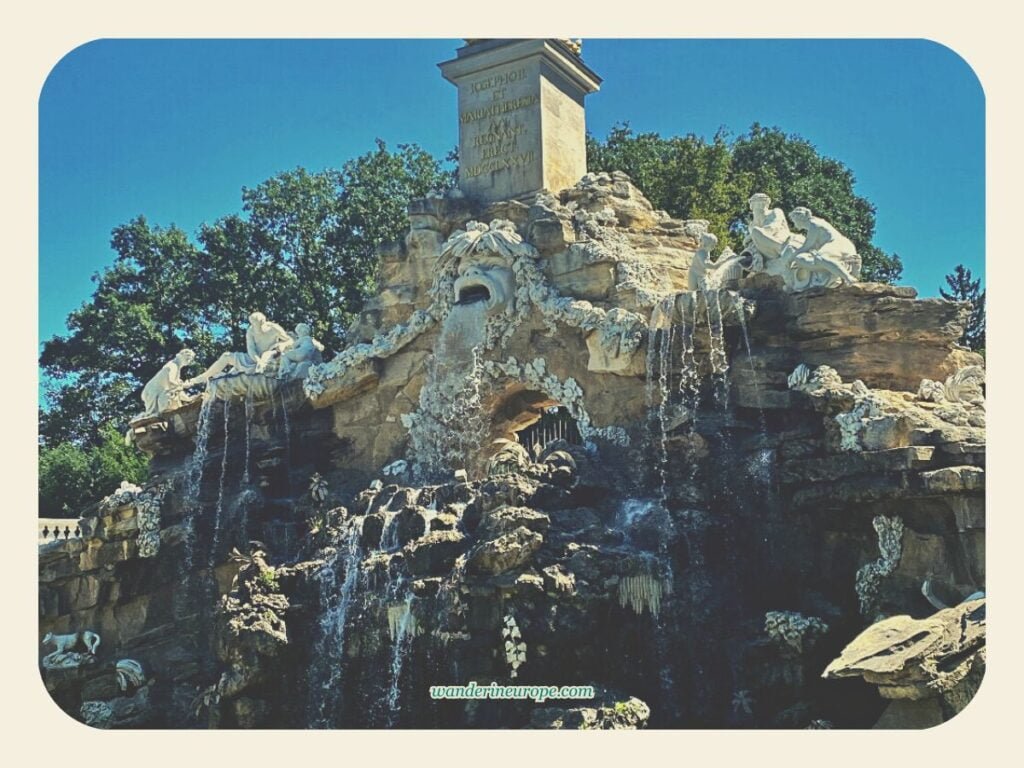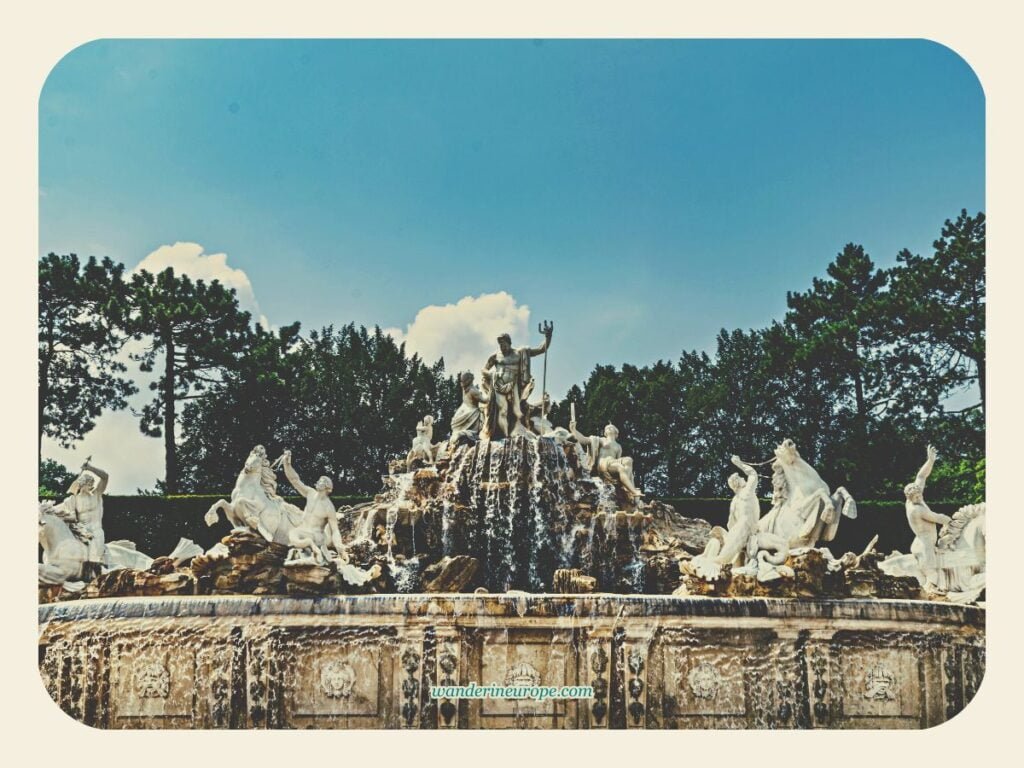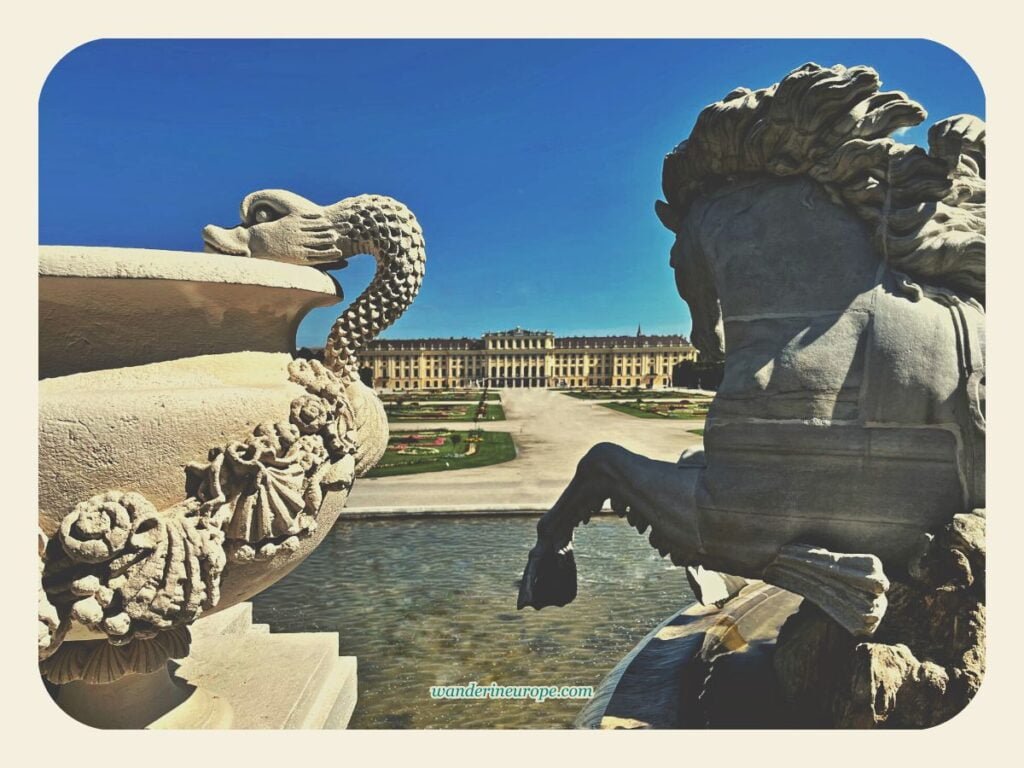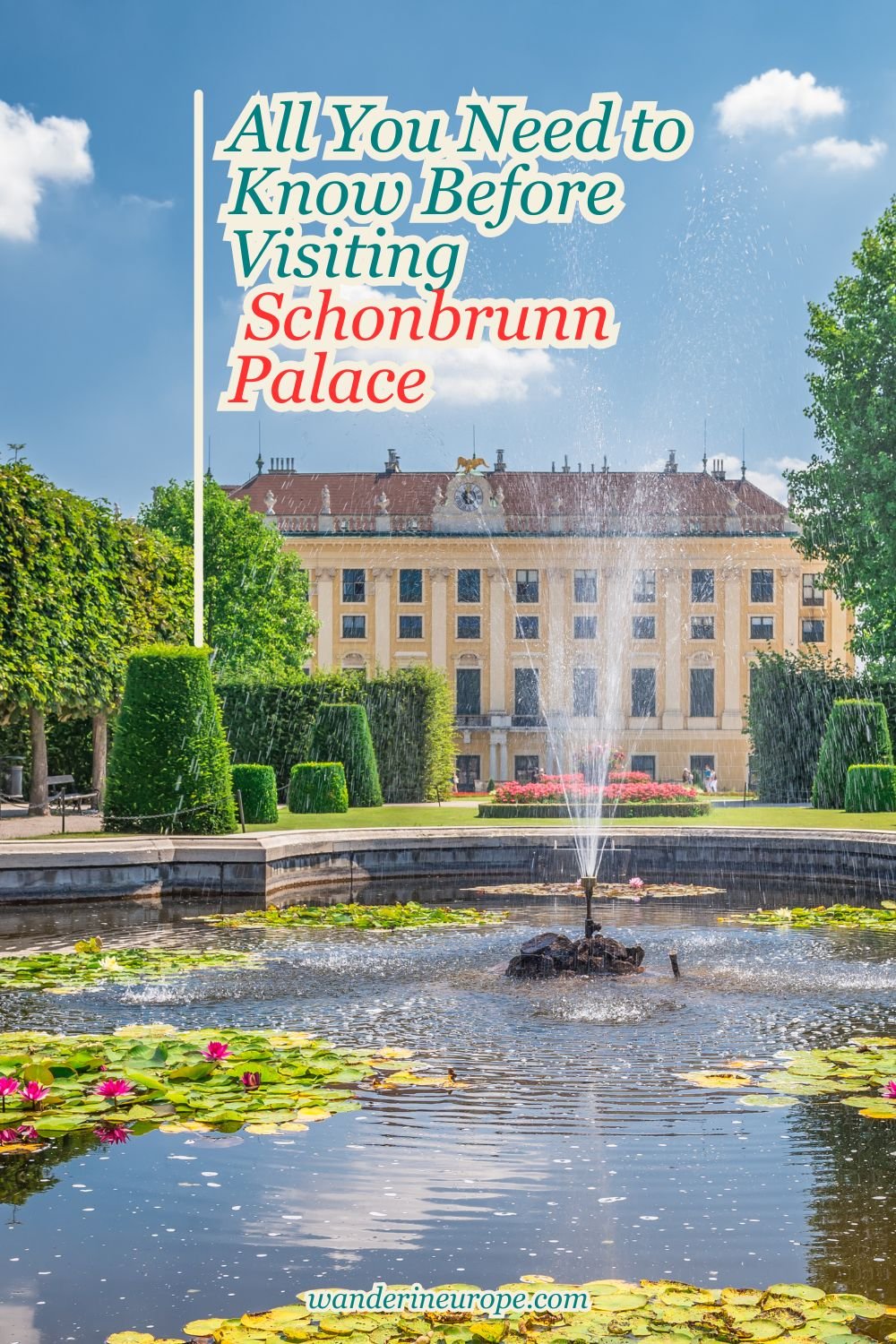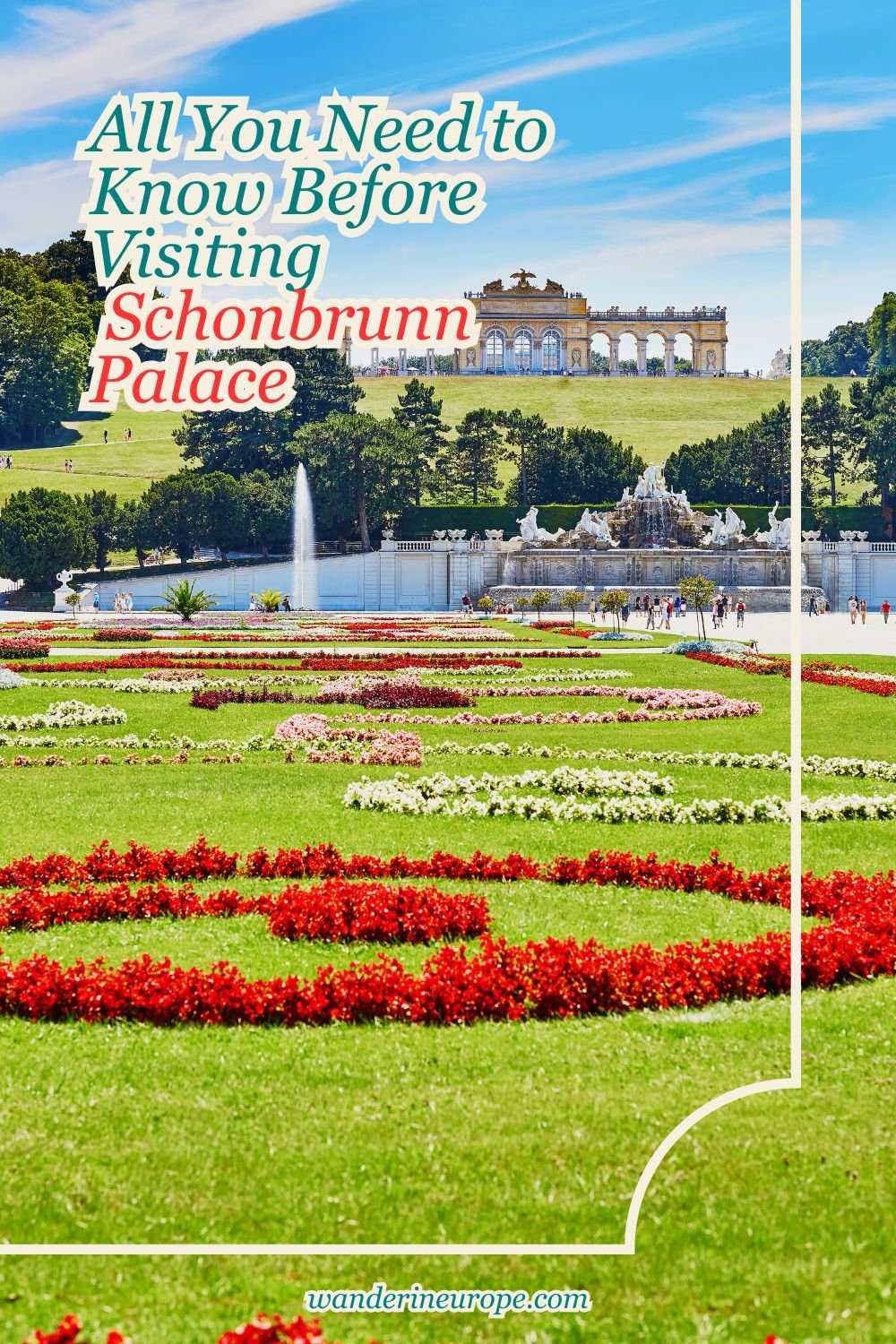All You Need to Know Before Visiting Schonbrunn Palace
WanderInEurope is reader-supported. Affiliate links and ads help us keep creating useful content for you.
Quick Navigation: Highlights, Palace Ticket Info, More Experiences, and Visitor Tips & Practical Info
Must See Places in the Palace
Schönbrunn Palace is a huge place, just like many other big palaces in Europe. But, when I first saw the map, I was amazed! The palace is so big that it takes about 20 minutes to walk from the main gate to the Gloriette. The main palace, where you’ll probably take photos near the Ehrenhof fountains, is just a small part of the whole area.
How long you spend at Schönbrunn Palace depends on the tickets and tours you choose. Most people spend about half a day seeing the main highlights. But if you want to see everything, you might need a day or two to explore the entire palace and its grounds at a relaxed pace.

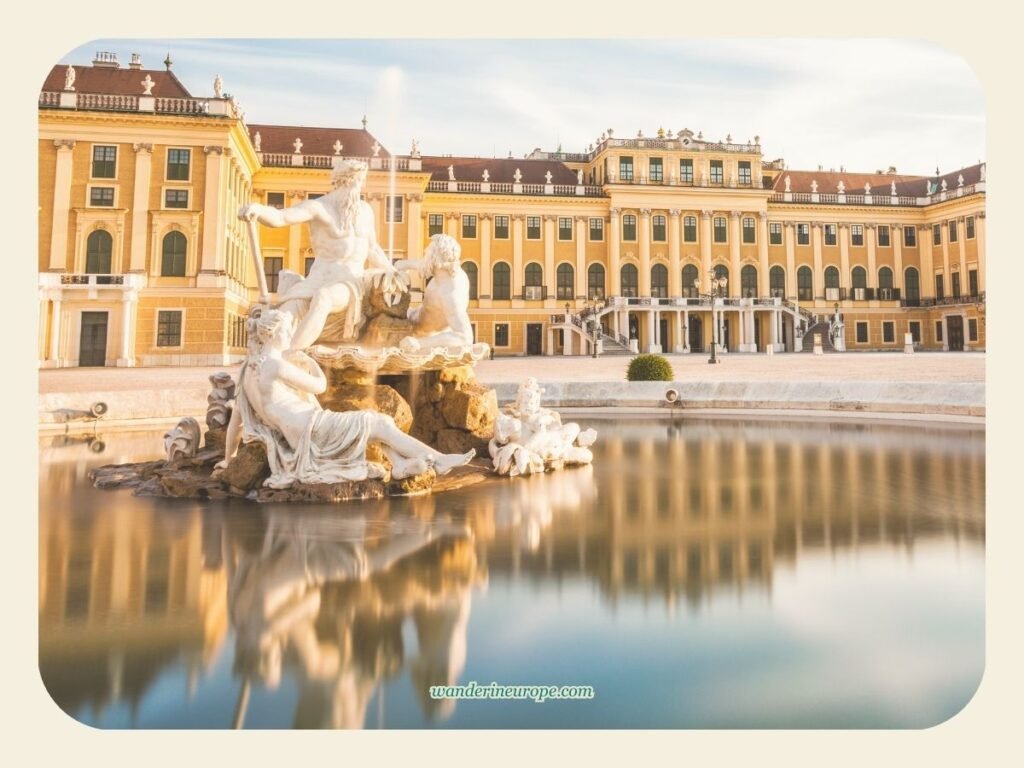

Note: If you want to learn about the history of Schönbrunn Palace, check out the link in the sources section of this post. It will tell you how the palace changed from a hunting ground in the 14th century to the beautiful building it is today.
Have a look: Vienna Activities You Can Enjoy for Under $100 (opens in a new tab)
1. The Palace
You can skip some parts of Schönbrunn Palace, but not the main palace. It’s the best part of the tour, with lots of cool things to see inside. What makes it really special is knowing that powerful European rulers once slept, ate, and held meetings in these rooms.
Note: We’ll talk about the different tours and how you can explore the main palace later. For now, let’s focus on the most important areas in the main palace to help you choose your tour.

So, you might remember that Schönbrunn Palace has over a thousand rooms. While you might think you can see at least a hundred, only 45 are open to the public.
But don’t worry! Even though you can only see a few, they are amazing and tell the story of the most important Habsburgs who lived there. Some of these famous people are Empress Maria Theresa, Emperor Franz Joseph, Empress Elisabeth, Archduke Franz Karl, and the well-known Marie Antoinette, who became the last Queen of France.
Out of these 45 rooms, I think you really need to see only 12. They are the most beautifully decorated, unique, and important. Facing the main palace from the main gate, from the right wing to the left, and from the upper to lower level, they are as follows.
Note: As much as I’d like to show you the interiors of the palace in this post, photography inside the palace is not permitted. But don’t worry, you can still get a feel for what it’s like inside the palace through my Pinterest Board, ‘Interiors of Schonbrunn Palace.’ There, I pinned all the photos of the different parts of Schönbrunn Palace.

2. Carriage Museum
The Carriage Museum makes visiting Schönbrunn Palace even more exciting. It has some of the royal family’s most valuable travel items. Can you guess what they are? They are their fancy carriages! And yes, they look like they came straight out of a fairy tale!

3. Great Parterre
The Great Parterre of Schönbrunn Palace offers some of the most picturesque views in Vienna. It makes the palace a perfect place for unwinding and taking in the scenery. The view of the Gloriette, a majestic triumphal arch situated on a hill, is particularly iconic. It overlooks the entire expanse of the palace grounds. What’s even better? There’s no admission fee to explore the Great Parterre!

4. Gloriette
Located within Schönbrunn Palace garden park is the Gloriette, a historical monument in Vienna that is not to be missed. Simply put, it stands as one of Vienna’s most beautiful monuments. With its striking columns, central arch, and side wings, the structure impresses everyone who walks through the Great Parterre. Many gloriettes (raised garden buildings) exist worldwide, but the one at Schönbrunn is the largest and most popular.

5. Privy Garden
Vienna boasts a plethora of “picture-perfect” locations, with a significant number situated within the confines of Schönbrunn Palace.
One such spot that I found particularly photogenic is the Privy Garden. Located to the east of the main palace, this garden offers a unique perspective of the main palace that most visitors often overlook. The Privy Garden is framed by a horseshoe-shaped pergola with five trellis pavilions, all linked by a green tunnel covered in Virginia creeper.

6. Maze and Labyrinth
In addition to learning about history, admiring beautiful architecture, and relaxing in large gardens, you can also have a fun adventure at Schönbrunn Palace. The maze and labyrinth are waiting for you on the left side of the Grand Parterre, as you look at the Neptune Fountain. They are situated on the southwest corner of the Grand Parterre.

7. Palm House
One of the reasons why Schönbrunn Palace is a must-see attraction in Vienna is the Palm House, located at the western side of the palace’s garden. It was commissioned by Emperor Franz Joseph and became the largest glass greenhouse in Europe when it was built in the late 1800s. With 2,500 square meters of space and 45,000 glass panels, it is a remarkable sight within the palace grounds.

8. Roman Ruin
If you are a fan of the Habsburgs, you should not miss Schönbrunn Palace, as this fascinating place has a lot to reveal about their history. You can discover something new about the Habsburgs just by walking around the palace’s garden and relaxing in it. The garden’s decorations reveal the Habsburgs’ perception of their own identity. For example, the Roman Ruin.

9. Obelisk Fountain
Another really impressive feature of the Schönbrunn Palace garden is the Obelisk Fountain. It stands at the end of the park’s eastern diagonal path and draws attention with its striking design.
The Obelisk Fountain offers another incentive to visit Schönbrunn Palace, especially if you are curious to learn more about the Habsburg dynasty. Similar to the Roman Ruin, the Obelisk Fountain stands as an insightful garden decoration that reveals the Habsburgs’ perception about themselves.

10. Neptune Fountain
Some of the most splendid fountains in Vienna can be found in the garden of Schönbrunn Palace. These fountains showcase the artistic skills of the Viennese people in creating watery masterpieces. Among the beautiful fountains in Schönbrunn Palace, one not to miss is the Neptune Fountain.

Visiting the Palace
Schönbrunn Palace has more to offer, and I haven’t even told you everything yet (see the resources section to discover all the attractions at Schönbrunn Palace). This is why visiting the palace can really be a worthwhile experience.
However, it can also be challenging to plan your visit and ensure you don’t miss anything important. If you need some tips on how to make the most of your time at Schönbrunn Palace, I’m happy to assist you here.
The most important thing you must keep in mind is that the palace has a strict admission policy with fixed time slots. To save yourself from waiting too long and wasting your day, you should secure your time slot ahead of time by purchasing an online ticket.
How you can spend a day in Schönbrunn Palace is determined by the tickets you purchase. Yes — there are different ticket options for Schönbrunn Palace.
Schönbrunn Palace sells individual tickets and combined tickets, giving you options on what suits your interests, budget, or available time.
Tip: If you are visiting Vienna for three to six days and you’re planning to see many attractions, you can save money on attractions with the Vienna Pass. It covers almost all the top sights and experiences, including Schönbrunn Palace.
Individual Tickets
For those travelers who are short on time and only want to see one or two parts of the Schönbrunn Palace, it’s preferable to buy the individual tickets. Here are the list of attractions in Schönbrunn Palace which can be visited individually:
- Main Palace — 30 minutes to 1 hour. Available all seasons.
- Gloriette — Not available in winter.
- Maze — Not available in winter.
- Privy Garden — Not available in winter.
- Orangery Garden — get insights into European horticulture. Not available in winter.
- Children’s Museum — get a glimpse to the everyday life of the imperial children. Available all seasons.
Note:
- You can buy individual tickets for these attractions on the official website of Schönbrunn Palace.
- Outdoor attractions are not available during the winter season.
- Visitors have different options for which parts of the main palace to visit.
- For more information about the Orangery Garden and Children’s Museum, please see the resources section of this post.
Tips and Suggestions
Combined Tickets
For travelers with plenty of time in Vienna and at Schönbrunn Palace, or those who want to see most of the palace’s beauty, combination tickets offer the best value for your money and time. Some of these package deals can save you up to 30% compared to buying separate tickets!
For example, the Classic Pass, which covers five attractions, is 15 euros cheaper than buying individual tickets. The last time I checked, there were four combination tickets available.
- Classic Pass
- Classic Pass Plus
- Combined Ticket: Children’s Museum + Maze
- Combined Ticket: Children’s Museum + Maze + Zoo
Note: Combined tickets include park attractions, which are only open during the non-winter months. As a result, these tickets may only be available from April to November. Please check the Schönbrunn Palace official website for exact dates of ticket availability.
More Info, Tips and Suggestions
Palace Tickets
The main palace at Schönbrunn is the highlight of any visit, with its spectacular architecture and tales of Habsburg emperors. While it may seem like a single attraction, you are offered with different ways to experience it and uncover its stories. Depending on your interest in architecture or on which empress or emperor you want to learn more about, you can choose how to tour the palace.
There are five tours available in Schönbrunn Palace…
- Grand Tour — includes piano nobile rooms #1 to #40
- Imperial Tour — includes Piano nobile rooms #1 to #27
- State Apartments Tour — includes piano nobile rooms #19 to #27
- Maria Theresa Guided Tour — includes rooms in the ground floor and piano nobile rooms on the eastern section of the main palace
- Franz Joseph Guided Tour — includes piano nobile rooms on the western section of the main palace
More Information About the Tours
More Activities & Attractions
side from the original features of Schönbrunn Palace that have become its main attractions, there are new ones that you can try to make your time in Schönbrunn Palace extra special. Are you looking for a romantic, musical, or modern experience? Or something that kids would enjoy?
I have found something for you.
Mozart and Strauss Concert
Vienna is a dream come true for classical music fans. You can find concerts everywhere you go, from cozy cafes to majestic halls. Hear the tunes of the great masters, who left their mark on this city.
If you’re already in Schönbrunn, you don’t have to look further to attend a classical concert. You can enjoy the music of Mozart and Strauss, played by the Palace Orchestra, in some of the most beautiful settings in Vienna. Whether it’s the Orangerie, the White-Gold Room, or the Schönbrunn Palace Theater, you’ll have a special experience listening to these masterpieces. The concerts are usually held at night — a perfect relaxation if you explore the palace for the whole day.
Check the price of the Mozart & Strauss Concert in Schönbrunn Palace here.
Panorama Train
Explore the Schönbrunn Palace Park in style by taking the palace’s own panorama train!
This is a hop-on hop-off service that lets you see the park’s attractions faster and easier. There are 9 stops along the way, so you can choose where to get off and on. The panorama train is especially useful in the summer, when the weather’s hot and you don’t want to walk too much. If you have kids who still walk slowly, the panorama train is a fun way to see the palace park. You do not have to worry about your kids getting tired or bored!
Learn more about Schönbrunn Palace Panorama Train here.
Virtual Reality
Imagine going back in time and seeing Schönbrunn Palace as it was three centuries ago…
Well, you don’t have to imagine anymore, because you can do it with Virtual Reality in Schönbrunn Palace. Just put on the VR gear, and you’ll be taken on a realistic historical adventure. You’ll witness historical moments from the 18th century, hear Mozart’s first compositions, and even join Empress Elisabeth and Emperor Franz Joseph for dinner! It’s a unique and exciting way to explore and learn more about Schönbrunn Palace.
Here’s more information about the VR experience in Schönbrunn Palace.
Garden Carriage Ride
Want to feel like royalty for a day? Then hop on a horse carriage and explore the gardens of Schönbrunn Palace. Here are two why’s:
(1) You’ll see the park as the empress and her guests did centuries ago. And you’ll also learn some fascinating facts about Vienna from your friendly Fiaker (that’s what they call the driver). He’ll tell you stories about Schönbrunn, its residents and visitors, and the long tradition of horse-drawn carriages in Vienna. The carriage ride is a great activity for families, couples, elderly people, or any people traveling in a group of 4.
(2) If you’re traveling with your loved one, a carriage ride in Vienna can be the romantic moment you’ve been looking for. You and your partner will feel like the prince and princess of Schönbrunn Palace! Senior parents and kids, on the other hand, will definitely appreciate a carriage ride at Schönbrunn Palace, as well. It’s a nostalgic and convenient way to see many of the palace’s attractions, and kids will love feeling like they’re in a fairytale.
Learn more about the carriage ride in Schönbrunn Palace here.
Visitor’s Information
From great hotel deals to skip-the-line tickets and affordable eSim to cheap rentals, click here for the best hotel deals and more travel discounts.
Explore Vienna Further
Schonbrunn Palace is a highlight of Vienna, but there’s plenty more to discover!
Try the wanderer’s favorite experiences in Vienna. From breathtaking views to remarkable landmarks, these unforgettable places made exploring this amazing city so special.
For ideas and inspiration on making the most of your visit to Vienna, check out the travel plans below.
Find all the travel guides to Vienna and its tourist attractions below.
Resources
Well, that’s all I can share about Schönbrunn Palace for now! I hope you found my very long post insightful and helpful.
I spent more than a week writing it, because I’m really passionate about this beautiful palace and I can’t help but discover even its smallest details.
Anyway, if you need more information about Schönbrunn Palace, here are some links that you might find useful.
- History of Schönbrunn Palace (Official website)
- Opening times of the different parts of Schönbrunn Palace
- Official website of Imperial Carriage Museum
- Official Website of the VR experience in Schönbrunn
- Official Website of Vienna Zoo
- More information: Desert Experience House
- Parking lot information of Schönbrunn Palace
- Public Transport Schedule Finder
- More inqformation: Orangery
- More information: Schönbrunn Palace in Children’s Museum

Pin this to save it for later or bookmark it to read anytime.


